Beyond the Blue: Papahānaumokuākea Mapping
(EX2403, EX2404, EX2501)
A Journey on NOAA Ship Okeanos Explorer
Meet Sarah Hutchinson and Astrid Zapata-De Jesus, Explorers-in-Training on the Beyond the Blue: Papahānaumokuākea Mapping 3 expedition. Follow along as they share their adventures on NOAA Ship Okeanos Explorer to map the deep waters of Papahānaumokuākea Marine National Monument.
Explorer-in-training Sarah Hutchinson provides a reflection based on her recent experience on the Beyond the Blue: Papahānaumokuākea Mapping 3 expedition. NOAA Ship Okeanos Explorer arrived in port in Honolulu yesterday to close out work in 2024!
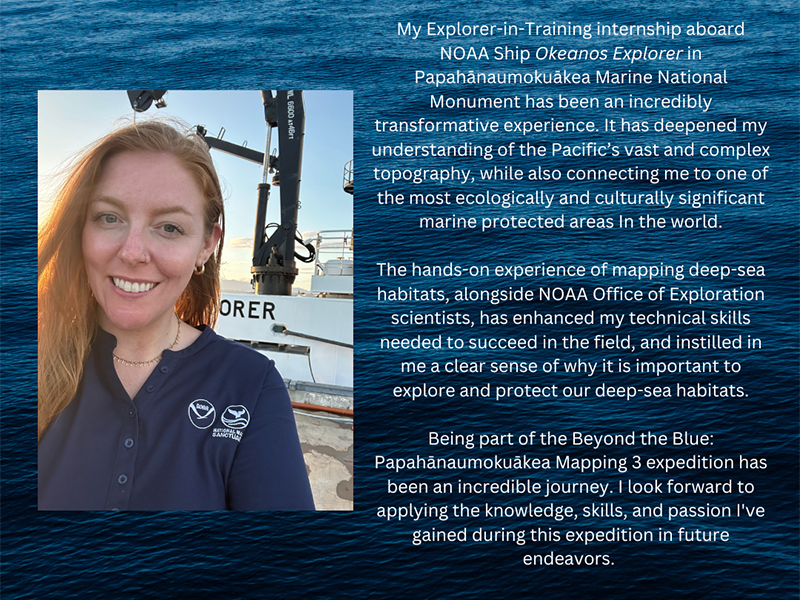
We want to extend a big thank you to the dedicated NOAA Corps officers aboard NOAA Ship Okeanos Explorer!
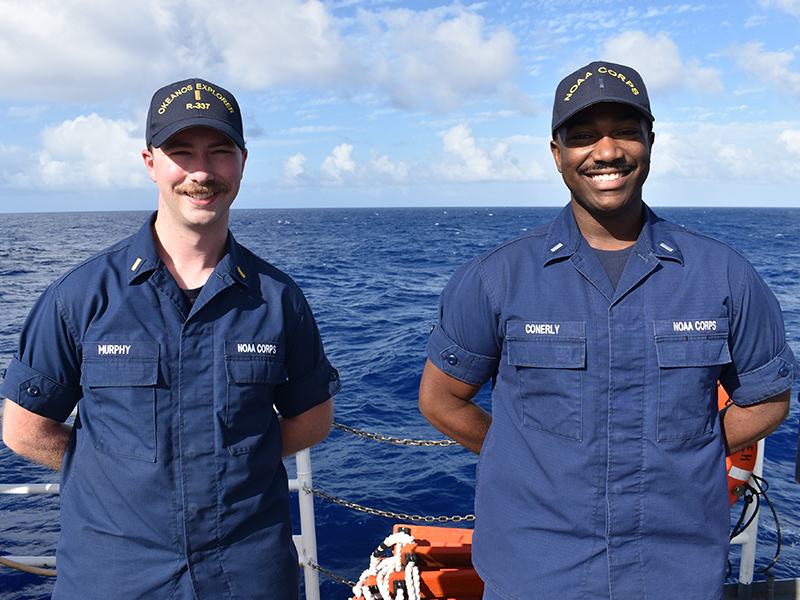
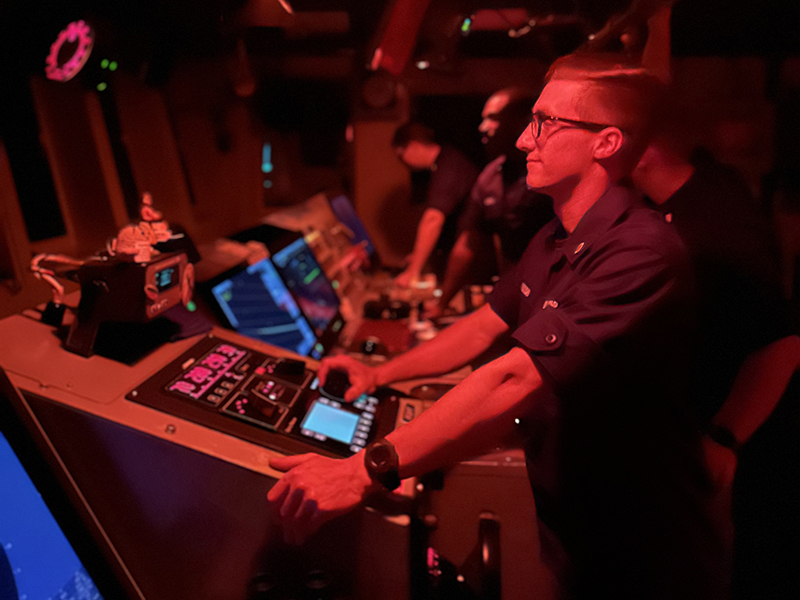
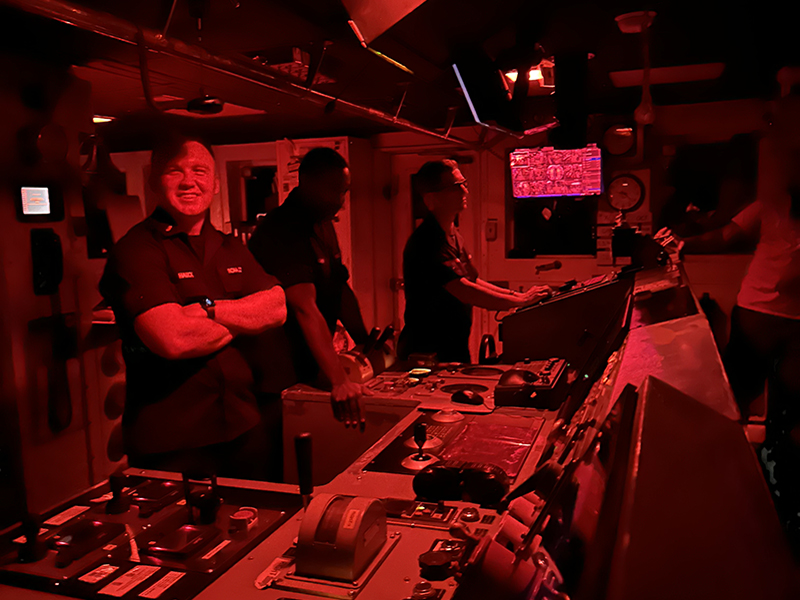
Their hard work and unwavering commitment keep us safe every day as we explore the depths of the ocean. From navigating us to our survey areas to conducting safety drills, including fire, abandon ship, and man overboard, their vigilance ensures our team is always prepared.
We’re incredibly grateful for their expertise and professionalism, sailing day and night to make each expedition a success. Their efforts truly make all the difference, and we couldn't do this work without them!
Celebrating Lonoikamakahiki (Hawaiian New Year) aboard NOAA Ship Okeanos Explorer! This November, our cultural liaisons, Kelsie Pīkake Kuniyoshi and Kalauʻihilani Robins, guided us in the art of lei making. These beautiful creations, crafted from flowers, leaves, and more, symbolize Aloha — love, friendship, and honor.
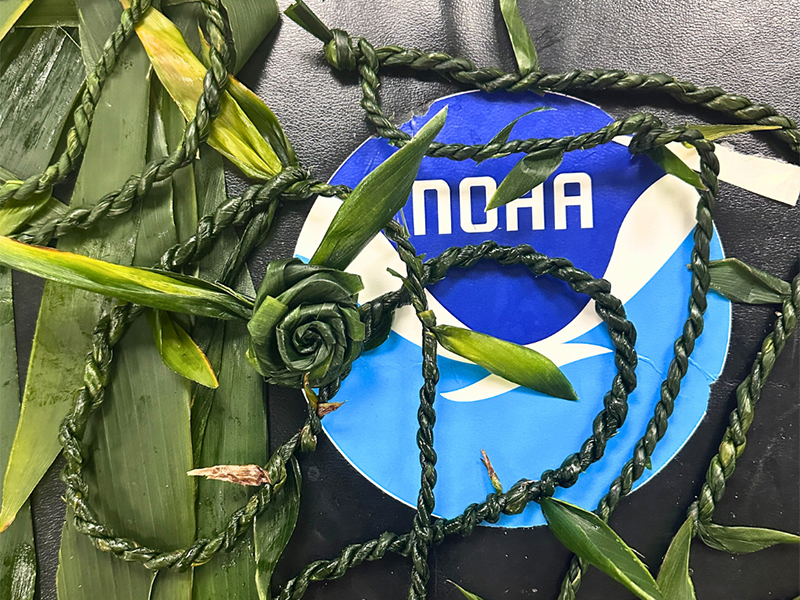
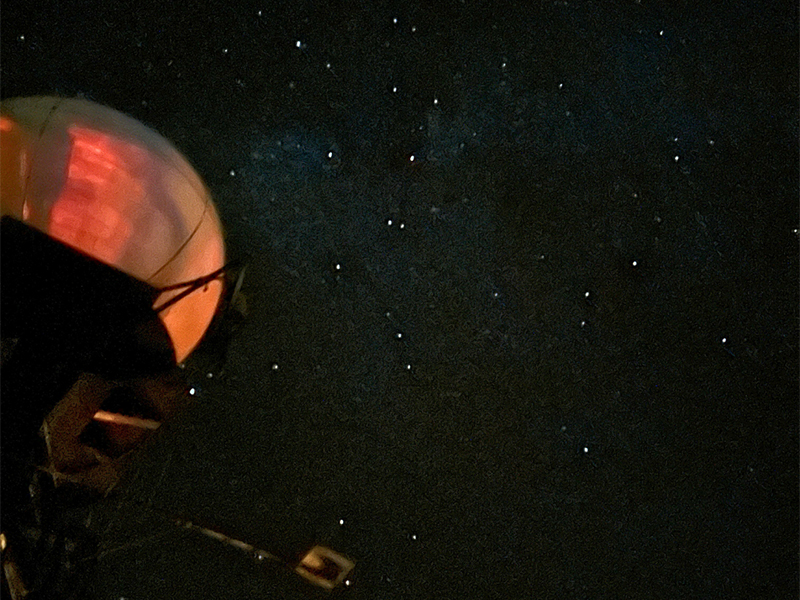
We also spent time stargazing and spotted Ke Kā o Makaliʻi, the Hawaiian constellation known as 'the Bailer of Makaliʻi. During Hoʻoilo (the Hawaiian winter), these stars light up the night sky, just as they once guided Polynesian voyagers across the vast Pacific.
That extra hour of snooze, thanks to the end of daylight savings time? Hawaiian monk seal approved!
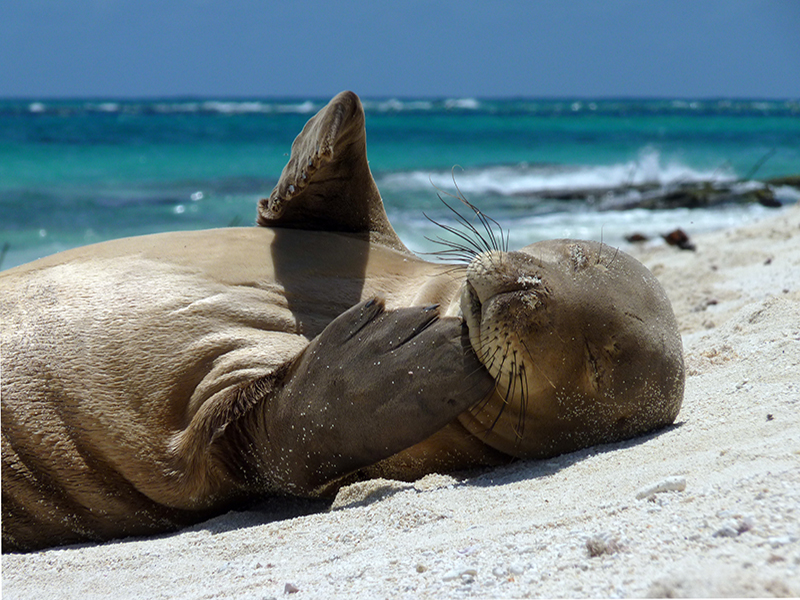
What do Hawaiian monk seals have to do with ocean exploration? Why does exploring the ocean matter?
Exploring the ocean reveals not just its wonders but also its vital connections to the entire ecosystem! In 2016, scientists discovered four new species of algae in waters around Hawaiʻi at depths of 60-120 meters (200-400 feet). These unique species, collected during NOAA surveys, support endangered Hawaiian monk seals, who rely on the ʻĪliohāhā algae for foraging in their homes in the Hawaiian archipelago.
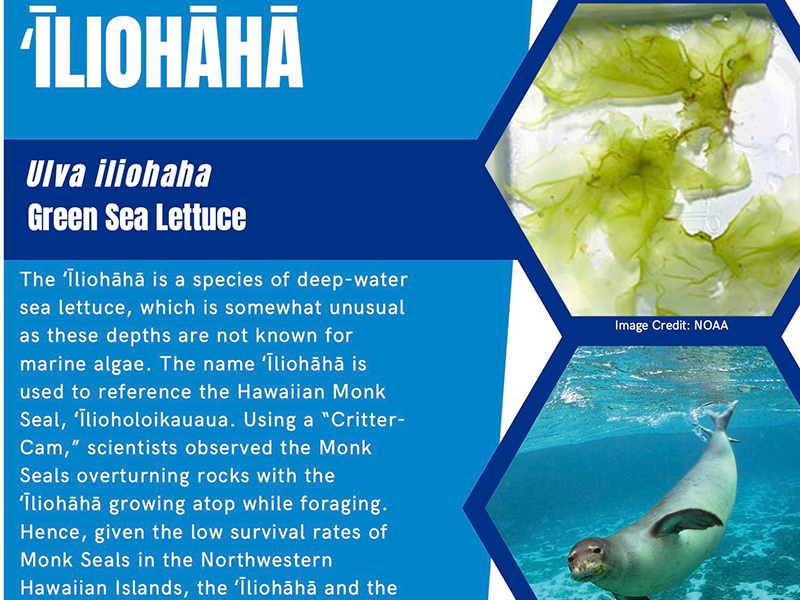
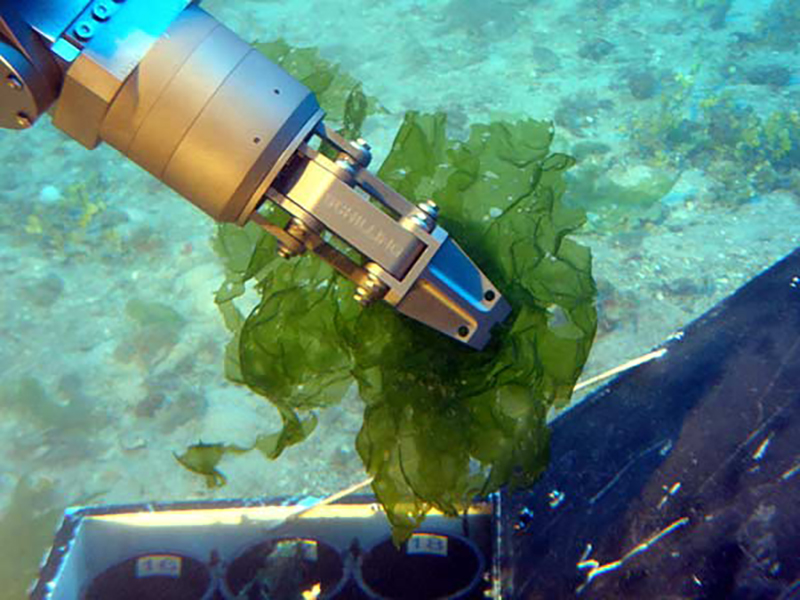
Fun fact from the State of Hawai‘i Division of Aquatic Resources: “Hawaiian monk seals spend about one third of their time resting on land…”
Learn more about Hawaiian monk seals from NOAA Fisheries.
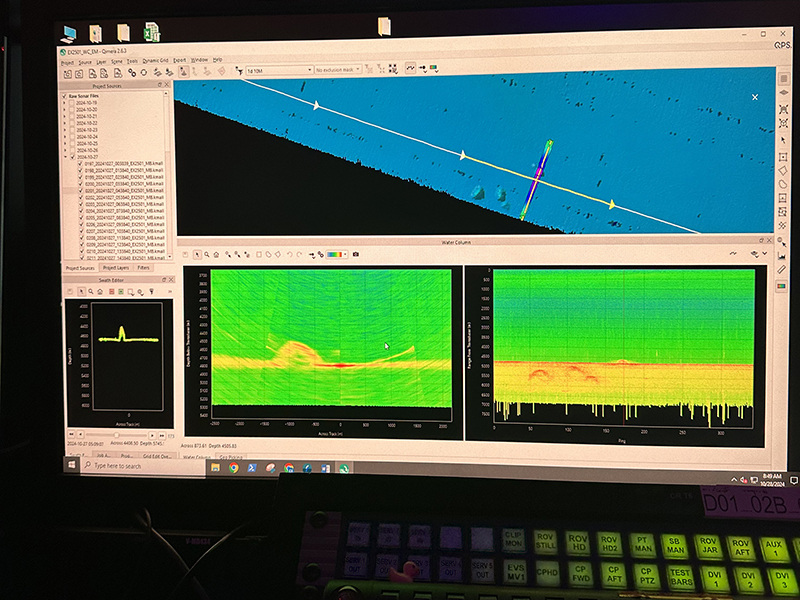
As explorers-in-training, we spend our days in the mission control room on NOAA Ship Okeanos Explorer. Multibeam sonar data is collected and imported into our software. We are responsible for making sure incoming data accurately represents the true seafloor. This includes monitoring sonar acquisition, defining instrument and sounds speed processing settings, and cleaning multibeam raw point cloud data. These processed data are turned into standardized mapping products that are sent to shore at the end of each day. Additionally, we launch expendable bathythermographs (XBTs) to determine the ocean’s temperature, which helps us determine the overall sound profile.
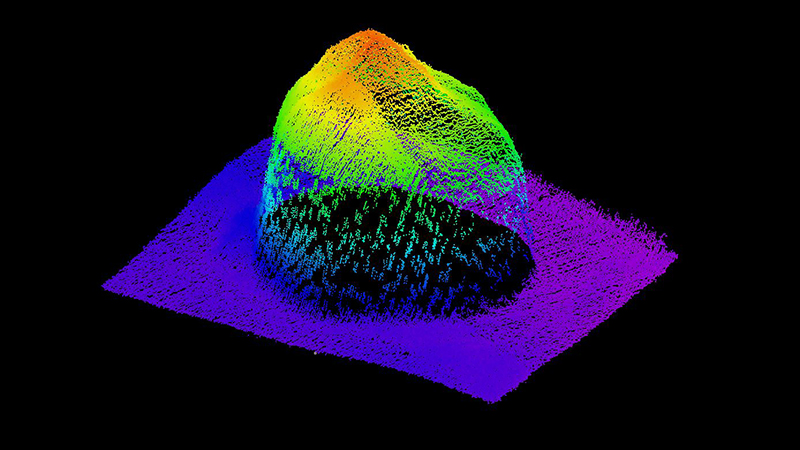
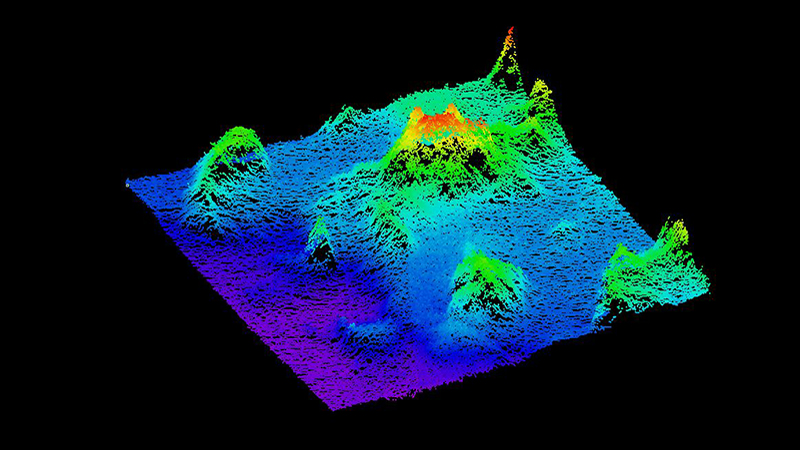

Hauʻoli Makahiki Hou! During our expedition, we’ve had the privilege of learning about Hawaiian culture with guidance from our cultural liaisons, Kelsie Pīkake Kuniyoshi and Kalauʻihilani Robins. Their knowledge and passion have enriched our journey, especially as we explore Makahiki, the celebration of the Hawaiian New Year.
Video courtesy of NOAA Ocean Exploration, Beyond the Blue: Papahānaumokuākea Mapping. Download largest version (mp4, 17.6 MB)
As the constellation Makaliʻi rises in the eastern sky at sunset, it marks the beginning of Makahiki. This season, typically starting in November and continuing through late January, aligns with the rainy season and celebrates abundance through tribute, harvest, sport, and play.
In the Hawaiian calendar, the year is divided into Kauwela, the dry season, and Hoʻoilo, the wet season. The four-month Makahiki period was a joyful and festive time honoring the god Lono, one of the four principal deities in Hawaiʻi and throughout the Pacific. Lono’s domain includes fertility, agriculture, and peace, and during this time, warfare among chiefs was strictly forbidden, reinforcing the spirit of peace.
Makahiki is not only a time of rest and rejuvenation for the land and its people, but also a season to strengthen social bonds, offering a chance to renew relationships and build new ones.
Lonoikamakahiki!
Happy Halloween from your favorite ocean explorers!

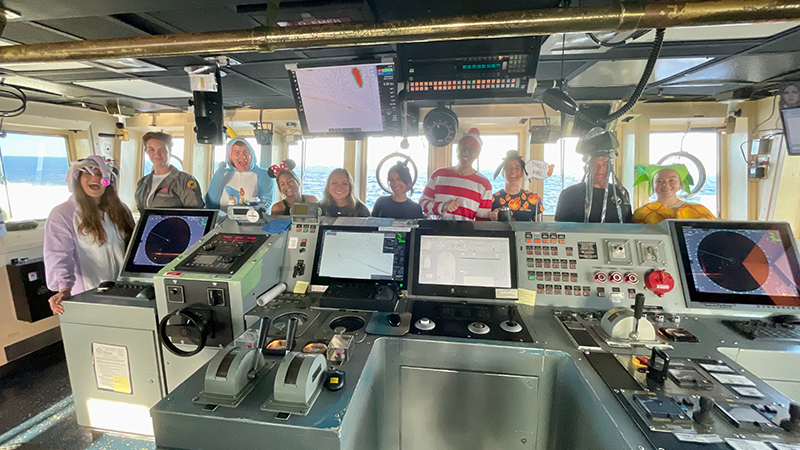
If you happened to be watching the live video stream this morning, you may have seen us wishing everyone a happy Halloween LIVE from Mission Control on NOAA Ship Okeanos Explorer!
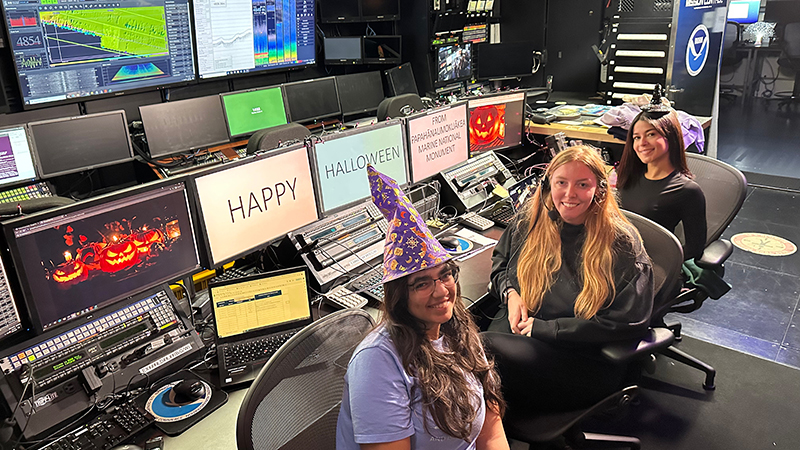
As you can see, we take Halloween very seriously on NOAA Ship Okeanos Explorer!

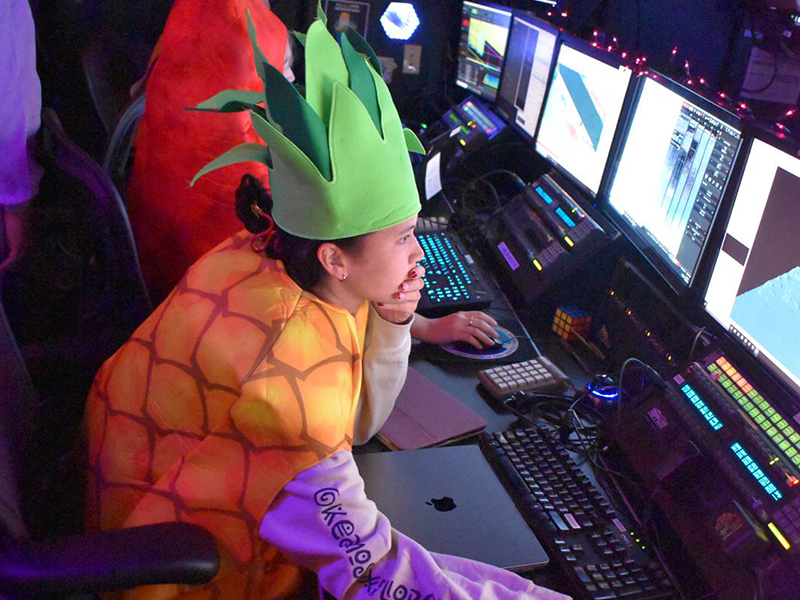
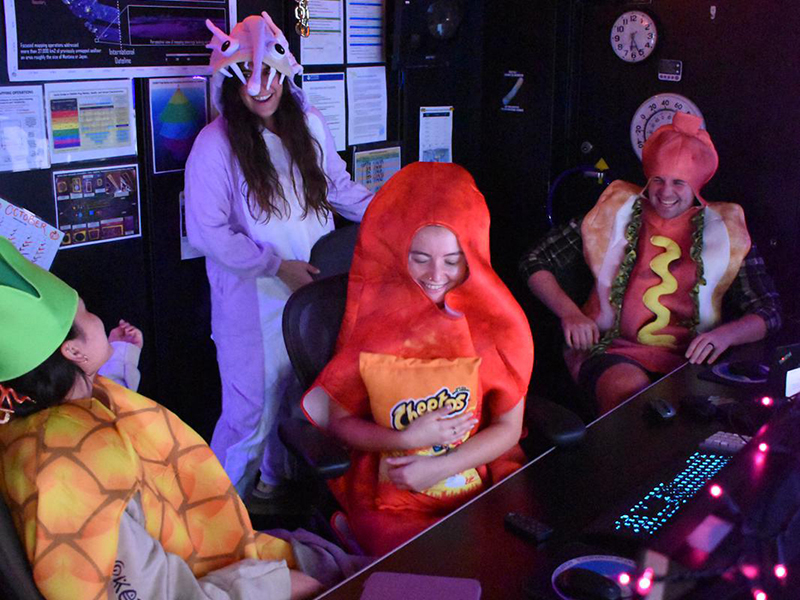
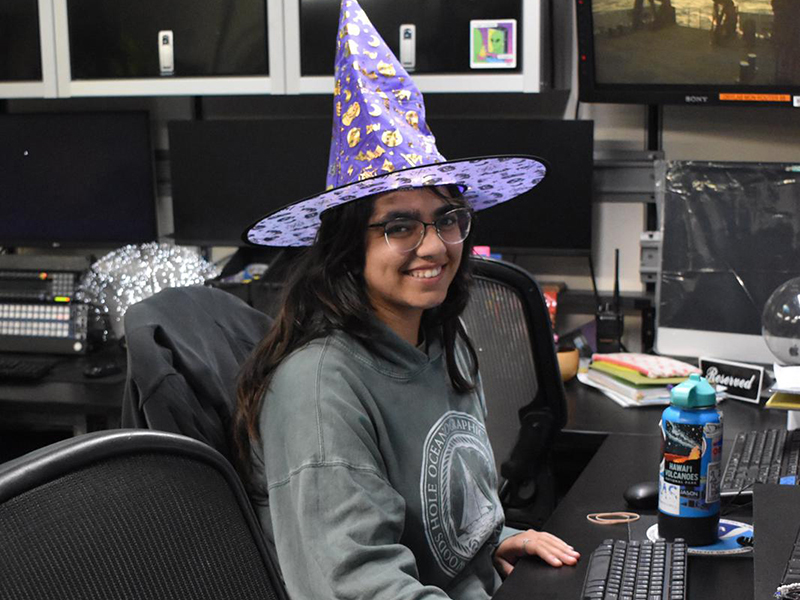
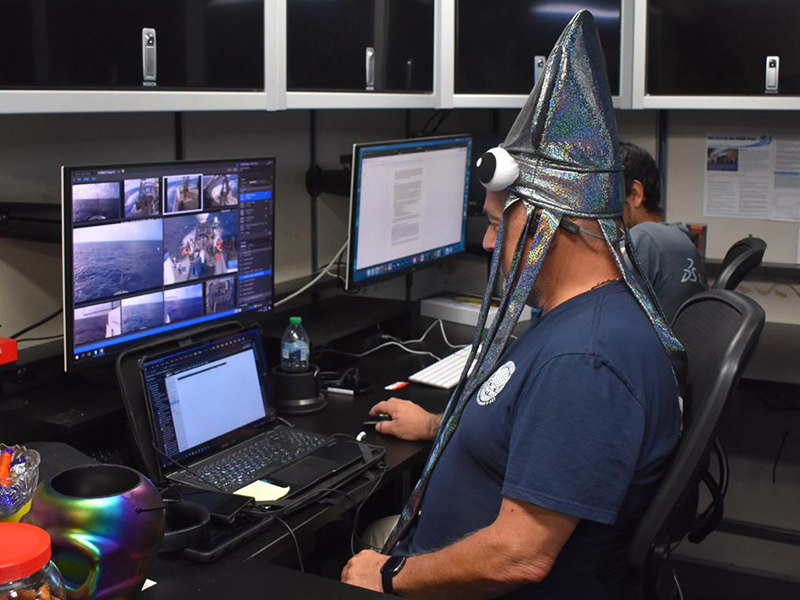
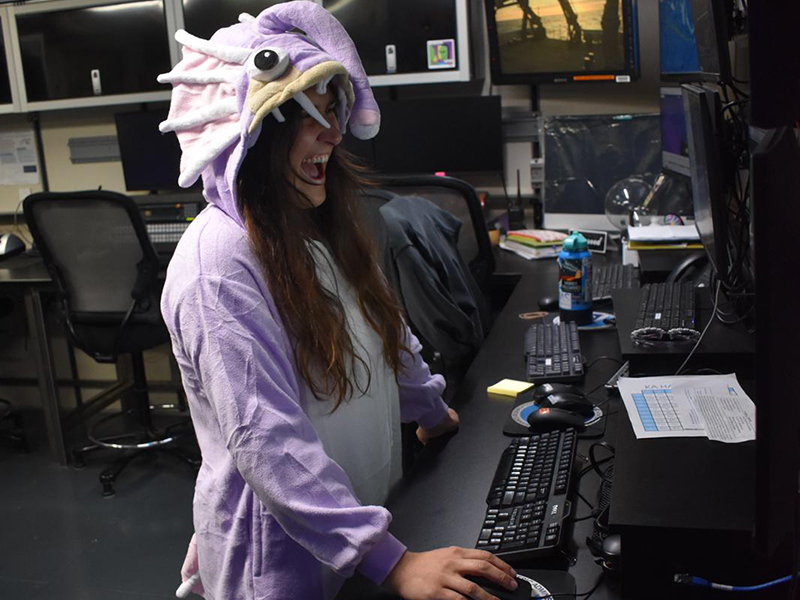
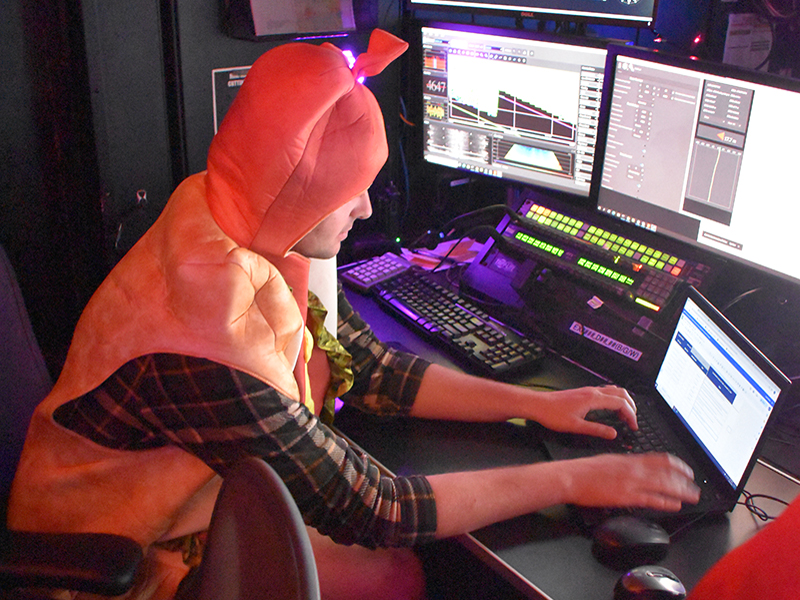
Keeping with the Halloween theme…phantom sounds of the deep sea! Click below to hear spooky sounds from the deep.
Slow Down: Mysterious Antarctic sound, likely from a massive iceberg grounding, with its frequency dropping over seven minutes as it slows against the seafloor. Images and sounds courtesy of NOAA and NOAA Ocean Exploration. Download largest version (mp4, 1.55 MB)
Volcanic Tremors: Tremors from the Volcano Island chain south of Japan: bursts of seismic energy lasting 4-5 minutes, with 30-second pauses before the next wave begins. Images and sounds courtesy of NOAA and NOAA Ocean Exploration. Download largest version (mp4, 1.94 MB)
Bloop: “The Bloop” is the given name of a mysterious underwater sound recorded in the 1990s. Years later, NOAA scientists discovered that this sound emanated from an iceberg cracking and breaking away from an Antarctic glacier. Images and sounds courtesy of NOAA and NOAA Ocean Exploration. Download largest version (mp4, 1.09 MB)
Earthquakes: Deep cracks and rumbles from shifting tectonic plates and underwater volcanic activity. Images and sounds courtesy of NOAA and NOAA Ocean Exploration. Download largest version (mp4, 2.83 MB)
Blue Whale: The call of a northeast Pacific blue whale is perhaps the best known to date. It generally consists of two parts, A and B. The A call is a series of pulses (on the order of 1.5 pulses per second), while the B call is a long moan. Images and sounds courtesy of NOAA and NOAA Ocean Exploration. Download largest version (mp4, 1.55 MB)
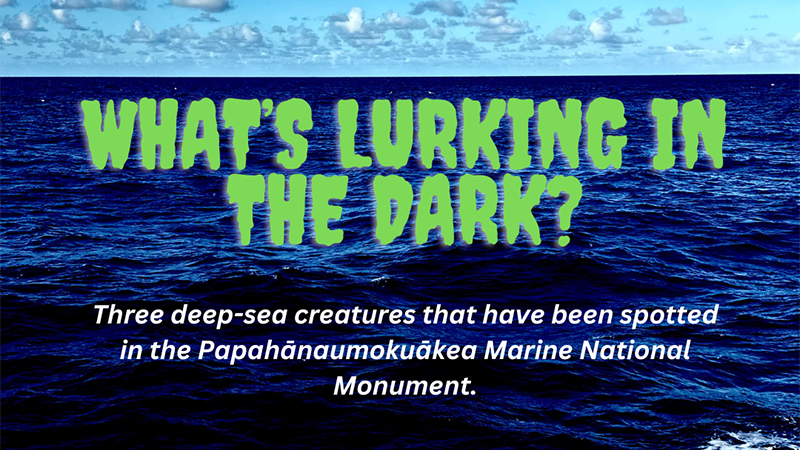
Did someone say spooky deep-sea creatures? While we navigate through the Pacific Ocean, we often wonder what lurks in the dark. Meet these three amazing creatures spotted within Papahānaumokuākea Marine National Monument and learn about their weird adaptations!

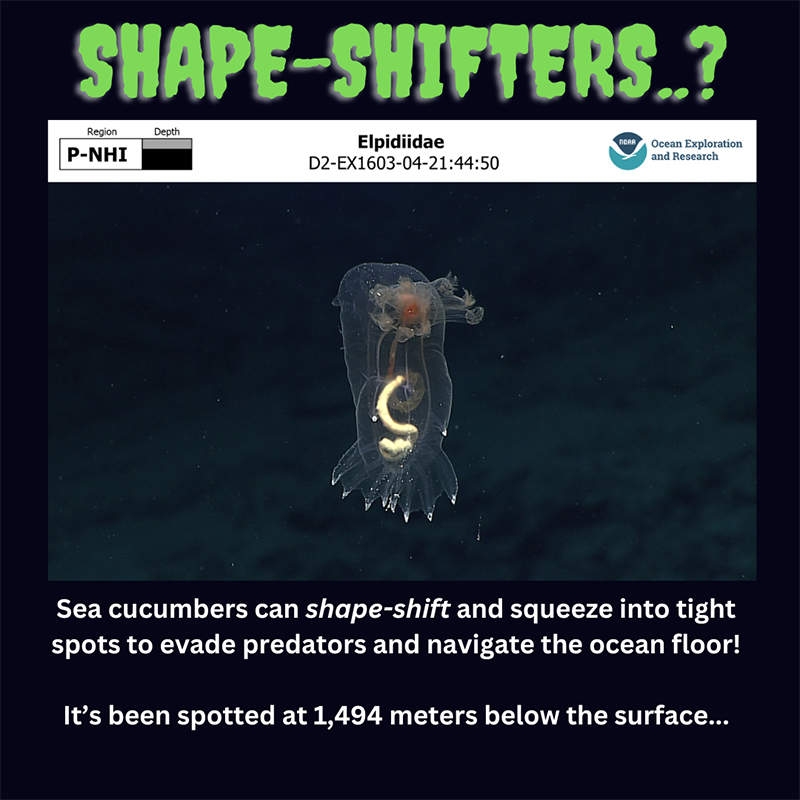
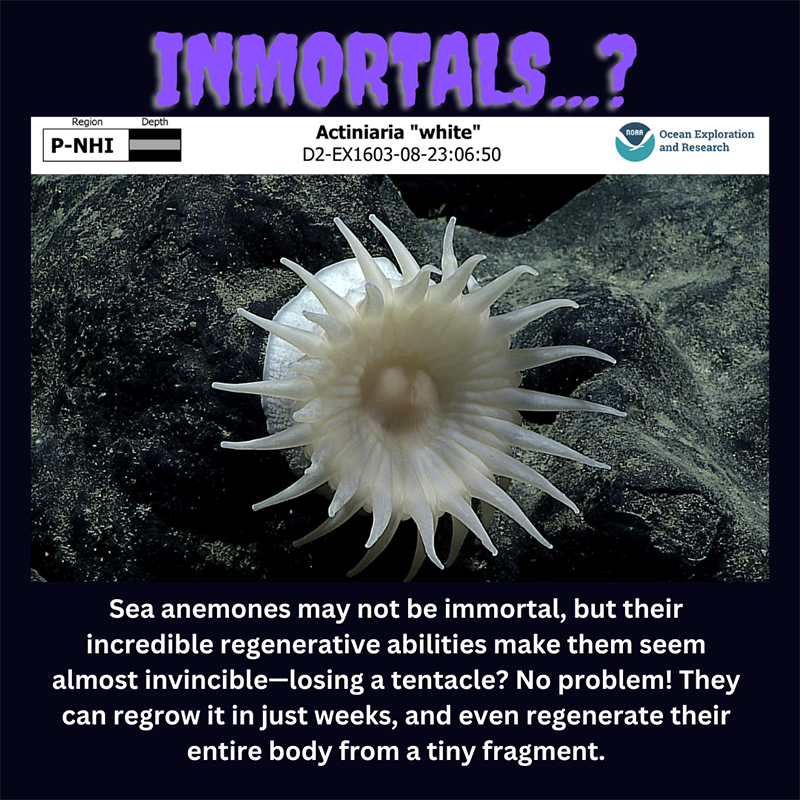
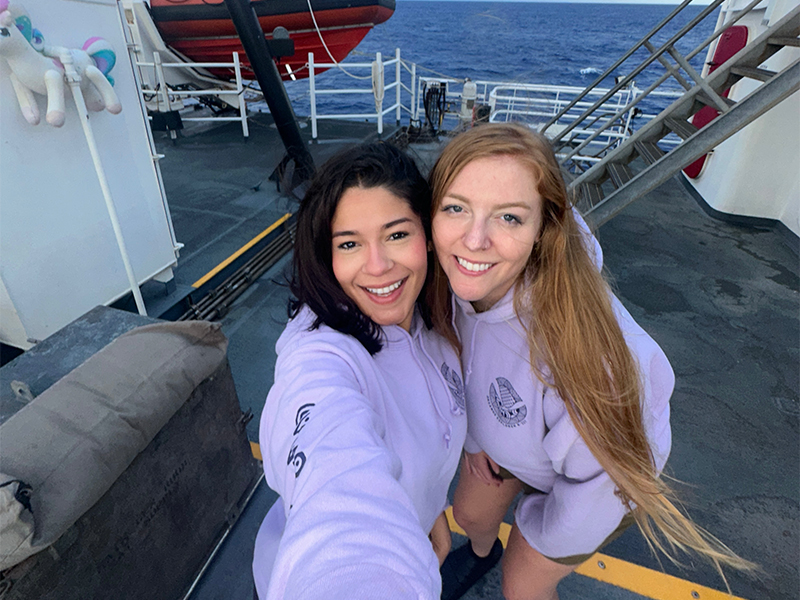
Hello everyone! We are Sarah and Astrid, Explorers-in-Training on NOAA Ship Okeanos Explorer! Follow along on our journey as we spend the next few weeks mapping the unknown seafloor in Papahānaumokuākea Marine National Monument.
Published October 28, 2024
Last Updated October 29, 2024

